
Holy figures
Visit religious sites, explore ancient pilgrimage routes and learn about the Saints and Holy men and women of God who lived and worked in the 15 Dioceses of the Emilia-Romagna region: this project, developed in partnership with the National Office for Pastoral Leisure, Tourism and Sport of the Episcopal Conference of Emilia-Romagna, aims to revive religious tourism by promoting the holy figures who lived and worked in Emilia-Romagna.
San Francesco D'Assisi
Francis was born in 1182 to Pietro di Bernardone and the noble Giovanna Pica, in a family in the emerging bourgeois of the city of Assisi that, thanks to their cloth business, had become quite wealthy. After finishing school under the canons of the cathedral, at age 14 Francis dedicated himself completely to the family business. He spent his youth between the happy brigades of Assisi's aristocrats and taking care of his father's affairs in the cloth industry. In 1202, Perugia and Assisi were openly at war. Perugia won the battle and among the captured Assisi people was the twenty year old Francis, who would remain a prisoner in Perugia for about one year.
MoreFrom a historic point of view, the circumstances of Saint Francis's conversion have never been clear and the only sources describing them are the hagiographies. It would appear that his frustrated desire to become a knight and fight in the crusades played an important role, but more than anything an increasing sense of compassion for the weak, lepers, pariahs, the sick and the marginalized influenced his decision. This compassion would then be transformed into a real "fever of love" for his neighbors. His twenty-fourth birthday (1204) marks the beginning of his conversion: he abandoned his friends, his careless youth, for a life of intense prayer, his meeting with and kissing of a leper, his meeting with the crucifix in San Damiano, his pilgrimage to Rome and his first experience with poverty. He gave up his family wealth and restored the three churches of San Damiano, of San Pietro della Spina and of the Porziuncola. In 1208, Francis took on his evangelical and apostolic vocation; in the same year his first companions began to gather around him, becoming the First Franciscan Order. Four years later, Francis consecrated Clare to God by cutting her hair and dressing her, thus officially beginning the Second Franciscan Order.
The fame of Francis grew enormously as did the number of Franciscan monks. In 1217, Francis called for the first general chapter meeting of the Order, which was held at the Porziuncola: these meetings arose from the need to set up community life rules, organize prayers, strengthen unity inside and out, and to decide on new missions, and was thus held every two years. At the first one, the great expansion of the order in Italy was organized and missionaries were sent to Germany, France and Spain. During the Fifth Crusade, Saint Francis even went to Egypt. Besides the active life of Francis, who was possibly sick, he felt the continuous need to retreat to solitary places to find himself and pray (for example, the Hermitage of the Prisons of Assisi, on the peaks of Mount Subasio; Isola Maggiore on Lake Trasimeno; the Hermitage of the Cells in Cortona). These places offered the monk the silence and peace that allowed him to pray more intimately. Between 1224 and 1226, by now gravely ill in his eyes, he wrote the "Canticle of the Sun". On October 3, 1226, at age 44, Francis died at the Porziuncola. In 1230 the solemn translation of Saint Francis's body from San Giorgio to the new Basilica of Saint Francis in Assisi took place.
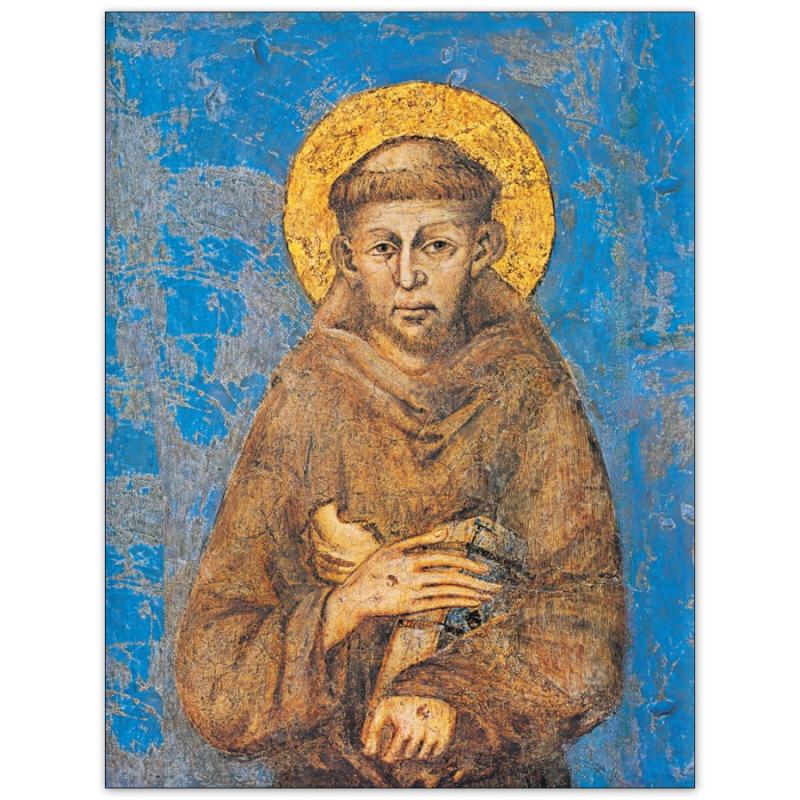

Saint Anthony of Padua
Saint Anthony was born in Portugal, in Lisbon, in 1195. In particular for the moral mediocrity, the superficiality and the corruption in society, Anthony felt compelled enter an Augustinian monastery in São Vicente to live in evangelical ideal without compromises. For the occasion of his moving, within the Augustinian Order, Anthony at age 17 took on his first big trip, about 230 kilometers, the distance between Lisbon and Coimbra, then the capital of Portugal. Here he lived with a large community of about 70 members for 8 years (1212-1220). This was an important period for the human and intellectual formation of the Saint, who here relied on valiant teachers and a large library.
MoreIn Santa Cruz Anthony became a priest in 1220. He asked for and received the permission to leave the regular Canons of Saint Augustine to embrace the Franciscan ideal. For the occasion, he abandoned his baptismal name, Fernando, to take the name of Anthony, the Egyptian hermit who owned the hermitage of Santo Antao dos Olivãis where the Franciscans lived. In the company of Brother Graziano from Bagnacavallo and other Romagna monks, in 1221 Anthony lived in Montepaolo. Here he spent whole days in his grotto (devotedly conserved even today) to live only with God, with the rigor of penitence and intimate prayer, with lengthy readings of the Bible and reflection. The following year, Saint Anthony began his mission as a preacher in Romagna. He spoke to the people, sharing his humble and tortured life, alternating his catechisms with works of pacification. He waited at the confessionals, he personally, or sometimes publicly, confronted heretics. In Rimini, in 1223, an episode took place in which, according to tradition, Saint Anthony convinced a very stubborn heretic who did not want to believe in the real presence of Christ in the Eucharist.
Anthony taught theology in Bologna from age 28 to 30 years old, thus becoming the first theology teacher from the newly formed Franciscan order. Francis of Assisi did not want his brothers to dedicate their time to the study of theology, but for Saint Anthony, given his solid faith and moral integrity, Francis made an exception and allowed him to teach the monks. He was then given the new job of "general preacher" with the option to go freely anywhere he felt was necessary, and, along with six other monks, to represent the Order in front of Pope Gregory IX. Saint Anthony's "Sermons" are considered to be the most famous religious literary work in Padua during the Middle Ages (1229-1231).
In the last part of his life, already in poor health, Anthony retreated to the hermitage in Camposampiero to gather his spirits. He died in 1231, at 36 years old and was buried in Padua, in the little church of Santa Maria Mater Domini, the spiritual sanctuary of the Saint during his period of intense apostolic activity. A year after his death, the fame of his many prodigies convinced Gregory IX to speed up the canonic process and declare Anthony a Saint on May 30, 1232, just 11 months after his death. The Church honored his doctrine, proclaiming him "Doctor of the universal church", with the title of Doctor Evangelicus in 1946.
Don Oreste Benzi
Don Oreste was born on September 7, 1925 in San Clemente (Rimini), the seventh of nine children in a modest family. As early as the age of 7, he expressed the desire to become a priest, at age 12 he went to seminary school and in 1949 he was ordained. His first job was as chapel priest at the Church of San Giuseppe al Porto in Rimini. After 1950, for several years, he was a teacher and spiritual leader at the seminary school in Rimini, which today is named after him. After that he taught religion in many Rimini schools becoming a guide for many high school students.
More
In 1969 he gave up all of his responsibilities to dedicate himself fully to his new role as priest, which he held until 2000, in the "Grotta Rossa" neighborhood in the suburbs of Rimini. Here he began an innovative pastor experience with other young priests: to decide everything together with the churchgoers, working with the faithful and not for them, requiring responsibility and awareness of their role as king, priest, and prophet and of their mission throughout history. From the moment in which he was ordained, Don Oreste found himself fulfilling his duty as a priest alongside young people and teenagers, and so he understood the importance of spending time with them. Moved by an innovative spirit, he made a revolutionary proposal for that era: to take disabled children on vacation, who were at that time "closed" in their family homes or in institutions.
In 1971, Don Oreste founded the association for the religious training of adolescents “Papa Giovanni XXIII”, which is today called the Community Papa Giovanni XXIII, of which he was general director until November 2, 2007, the day on which he returned to Our Father. The history of the Community Papa Giovanni XXIII is inextricably interwoven with his personal story. In 1973, he opened the first Casa Famiglia of the Community in Coriano, to «give a family to those who are without» and to “regenerate” with love children, disabled persons, people alone and abandoned, the elderly and whoever needed to be welcomed and helped everyday. His compassion for these kinds of people extended to drug addicts, minors without families, nomads, homeless people, prisoners, victims of cults, women working on the streets, and the elderly even when he went on missions. Easily recognizable by his long, threadbare tunic and his rosary always in hand, he changed many people's destiny. All of those that knew him remember his knack for being able to see into people's hearts, to see each person's strengths and uniqueness. The Community Papa Giovanni XXIII was recognized by the Holy See in 2004 as an international association of the faithful with pontifical rights. Today the Community sits down at the table, every day, with more than 41,000 people around the world thanks to 500 different outposts with family homes, fraternities, food banks for poor people, social centers, therapy communities, Bethlehem Mangers for the homeless, open families and prayer houses. Since 2006, APG23 has been part of the United Nations with the status of Consultative Special in the Ecosoc (Social and Economic Council of the United Nations), as a spokesperson for the forgotten people of the world where the world leaders decide on the fate of humanity. Thanks to the strength of its members, volunteers, and those who support it, the Community Papa Giovanni XXIII has carried on the great project of solidarity of Don Oreste: being a family for those who do not have one.


Daniele Badiali
Daniele Badiali was born on March 3, 1962 to a simple family in the countryside of Faenza (Ra). At a very young age he participated in the experience of Operazione Mato Grosso but, as he was very generous he could not settle for loving from a distance or at arm's length, so at age twenty-two he left to go for two years to Chacas, in Peru. Here he met Father Ugo de Censi and, together with others, he learned humility, his true vocation, and to correct and modify his character. After a period in Bologna, he returned to Peru in 1991, just two months after being ordained, as a “fidei donum” priest, taking on the responsibility of the parish of San Luis, in the Andes.
MoreHis house immediately became a reference point for many poor people and was constantly full of those “asking for food, asking for medicine, asking, asking, asking...". His days were so busy “with festivals in the villages, retreats with kids, confessions, preparation for first communions, the oratory, seminary lessons to do, not to mention weddings, baptisms, and funerals".
To his friends in Italy he wrote that he did not know "how to describe the suffering I feel in seeing so many sheep without a shepherd! It is like the suffering I feel when I notice that God counts less and less in the lives of the people I am trying to teach religion to!" While he felt like "a priest at the beginning of his walk of love", he also felt the weight of believing, in particular when compared to the genuine and simple faith of his parishioners. So, while others were charmed by his "contagious joy" and they admired him most for his "great faith", he confessed to feeling like "a sinner, a nonbeliever walking towards the Gospel". “This discovery of my incredulity keeps my feet on the ground, it makes me suffer, but it does not take away my hope in God and His goodness". So, running from one priestly activity to the next, even if he felt the drama of this emptiness and absence of God and "the disappointment that this crucified God is not what people are looking for", he tried to "learn to live how Jesus told us, to give away our own life". That is why on the evening of March 16, 1997, while returning with his collaborators from his usual priestly duties, when his car was stopped by a group of armed bandits who wanted an Italian hostage to get a ransom from Father Ugo, Daniele did not hesitate at all: “You stay, I will go”, he said to a volunteer who was already going towards the armed group. They found him two days later in an escarpment with his hands tied and a gunshot wound to the back of the head and his Christians knew that Daniele had succeeded in giving his life for his brothers. Like Jesus. And given that a love like this cannot be faked, they understood that Daniele had really meant it when he taught them "to look into the face of death as it is the only way to understand which direction to give your life."
Saint Dominic
Dominic of Caleruega was born in 1170 into a wealthy Spanish family. Ever since he was a child, he showed great compassion and empathy for other people’s pain. At first, he was educated by his uncle, an archpriest, then his family sent him to Palencia, where he devoted ten years to studying art and theology.
At the age of 24, he decided to follow his vocation to become a priest and joined the canonry of the Cathedral of Osma. Here, he was appointed subprior under the episcopate of Diego de Acebo, with whom he embarked on one of the most important journeys of his life. In 1203, he accompanied the bishop on a diplomatic mission in Continental Europe, where Dominic encountered two of the most pressing threats to Catholic Christianity at the time: Cathars and Pagans, who were still very much present throughout Northern Europe.
MoreIn order to defend the Church against heresy, Pope Innocent III sent him as a papal legate to Southern France to preach against the Cathars, who were particularly numerous in that area.
St Dominic stayed in Languedoc for ten years, during which he converted heretics using the sacrament of Reconciliation, public preaching, prayers and persuasion, never once resorting to violence. Legend has it that the Virgin Mary appeared to him in a dream and showed him the Rosary, instructing him to use it against heresy and sin.
Dominic realised that in order for the Cathars to be converted, monks and clergy needed to set the example by leading an ascetic life, in line with the gospel's message. This is why he sought to establish a new kind of order, one that would bring the Cathars back to the Catholic Church. In 1216, Pope Honorius III finally granted written authority for him to form the Order of Preachers. The order was built on four pillars—study, prayer, preaching and common life—and quickly spread throughout Spain and to the main European university cities, like Bologna.
When he eventually moved to Bologna, Dominic established the Dominican Community of Bologna and held the first two General Chapters of the order. He inspired and promoted the spread of the Order of Preachers until his death in 1221. His remains are still kept in the Basilica of St Dominic, which is why St Dominic is considered one of the most important Saints of the Emilia-Romagna region.
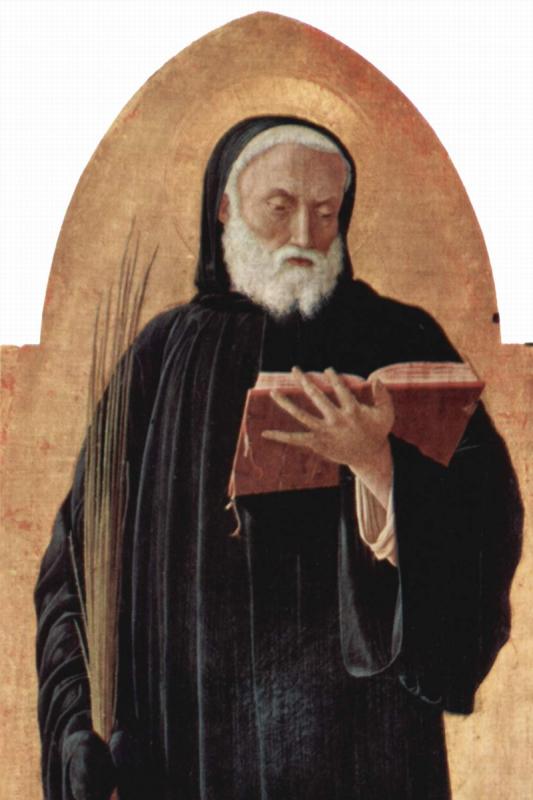
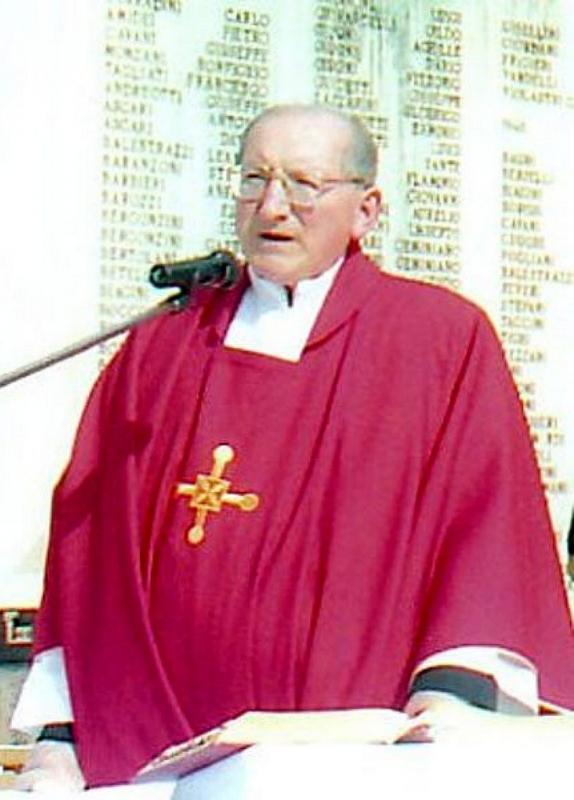
Don Adriano Fornari
Don Adriano Fornari was born on August 31, 1942 in Villabianca, a small town set in the foothills near Modena not far from Sassuolo. The Fornari Family was a simple family, very close knit and religious, not very wealthy but that is exactly why they focused on authentic and important life values. It is in this family atmosphere of good morals that Adriano realized that he wanted to become a priest. In 1953 he began his training to do just that, and this preparation led him first to the Seminary in Fiumalbo and then to the Seminary Metropolitano in Modena.
MoreIn 1966 in the church of San Giorgio in Sassuolo, Don Adriano received the Sacred Order from Mons. Giuseppe Amici: from that moment on the story of his life intertwined with that of the “Tommaso Pellegrini” Institute and the group of Deaf Modena Citizens. Here he had many jobs: Hearing Councilor of the Provincial Section of Modena of the National Deaf Organization (E.N.S.), National Councilor of the Italian Association of Educators for the Deaf (A.I.E.S.), Representative of the Ministry of Public Education for the state exams for teachers wishing to enter the teaching specialization for the deaf. In 1967 in Bologna he obtained his Diploma of Specialization in teaching the deaf and got his Pedagogy degree in the academic year 1969-70. So, in many ways and under many titles, Don Adriano accompanies the live of every deaf person.
Among the various responsibilities given to Don Adriano by his many Archbishops, we find that he worked on many fronts: Vice director and director of the “Tommaso Pellegrini” Institute for the Deaf; President of Caritas Diocesana; Priest of Saliceta San Giuliano; Director of the Caritas Diocesana (reconfirmed several times); Member of the Collegio di Consultori; Episcopal Vicar; Church Administrator of the Church of San Pancrazio; Priest of the Church of Fiorano. He continued to collaborate, until his death, with Don Giuseppe Albicini, his successor and dear friend, for the Confessions and Holy Masses.
The lifestyle that Don Adriano chose was that of being at the service of others. Also in illness, which slowly made him lose the use of his legs, he was an example for everyone for his resignation to the will of God. Don Adriano died on October 23, 2013.
Saint Martin
St Martin or Martin of Tours was a Roman soldier, a Bishop and a Christian monk of the 4th century. He was born in Pannonia (now Hungary), but moved to Pavia, Italy, with his family at a very young age. As the son of a veteran officer, he was educated and trained to become a soldier of the Roman army. His destiny was written in the name he was given at birth: Martin, in honour of Mars, the god of war.
He served in the Roman cavalry in Gaul, where he remained and worked for most of his life. It was during this long period of military service that Martin converted to Christianity.
MoreAccording to the hagiography, in the harsh winter of 335 he came upon a freezing beggar clad only in rags and tore his military cloak in two, giving half to the poor man. Later that night Jesus Christ appeared in his dream, dressed in the cloak half he had given to the poor man, and thanked him for covering him up. Moved by this vision, he decided to get baptised, although he kept serving in the Roman army for another twenty years.
He eventually left the army at the age of 40. Shortly afterwards he became a monk and moved to Poitiers, where he founded one of the earliest monastic foundations in the West. In 371 he was made bishop of Tours by popular acclaim on account of his reputation as a just and merciful man and of his stand against Arianism. However, he never let his new role as bishop divert him from his mission as a pastor and from founding new monastic communities centred around prayer, preaching and common life.
He died in November 397 and was canonised pre-congregation, soon becoming one of the most popular saints in Europe. In Italy, the cult of St Martin is associated with a phenomenon known as “St Martin’s summer”, a period of unseasonably warm weather that sometimes occurs around November 11 (feast day of St Martin). According to folklore, this spell of warm weather is tied to St Martin’s decision to tear his own cloak to keep the poor beggar from freezing to death.
His humble origins, along with his reputation as a kind, merciful Roman soldier, result in Saint Martin being very popular in the Emilia-Romagna region as well, especially in the countryside and in the mountains. He is also the patron saint of many villages and small rural towns.
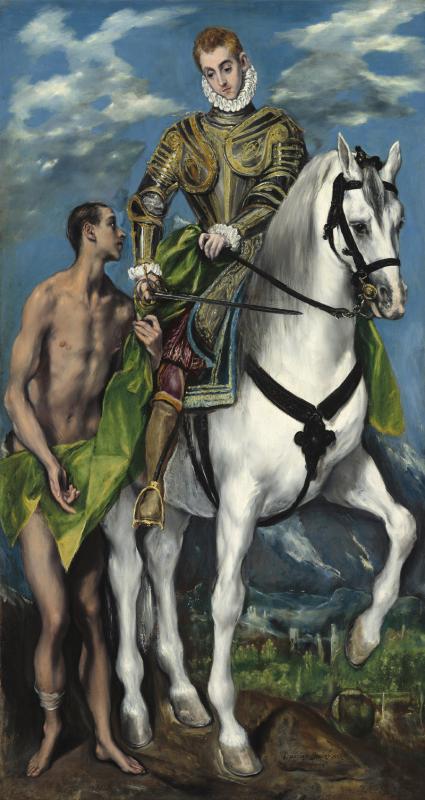
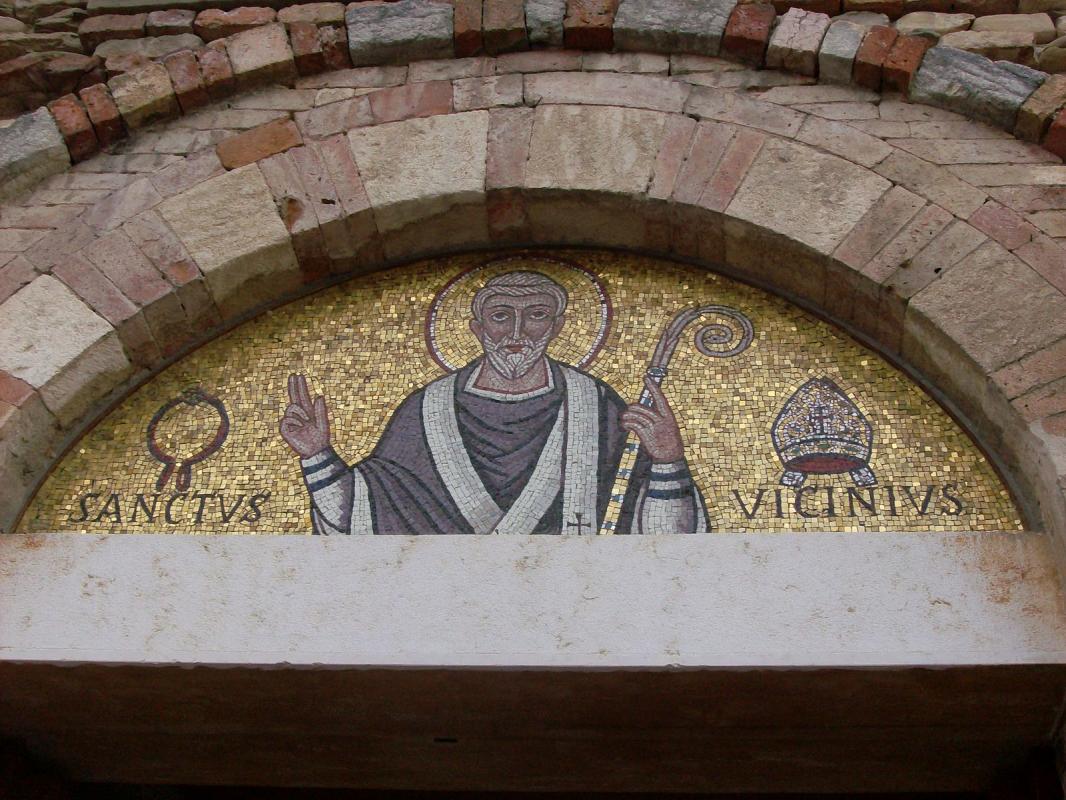
Saint Vicinius
Legend has it that Vicinius, who was originally from Liguria, fled to Romagna to escape the Great Persecution of Christians under Diocletian and Maximinus in the 4th century. He settled in the Savio valley, a strategic gateway that eventually helped the spread of Christianity.
Vicinius lived as a hermit on a mountain near Sarsina (now named after him—Mount San Vicinio), where he led an ascetic life of prayer and meditation. His reputation spread fast across the valley: he was known as a pious man with miracle-working powers and the ability to cast out demons through exorcisms and prayer. Therefore, when the time came for the town of Sarsina to choose a bishop, Vicinius was appointed by popular acclaim, especially since a divine sign appeared over the mountain top where the Saint lived.
MoreAs a bishop, Vicinius devoted himself to spreading the Gospel all over the Diocese and even before his death, on 28 August 330, his intercession proved particularly powerful in helping those who carried infirmities in body and spirit. Many people would go to Sarsina to meet its miracle-working bishop and receive his blessing that could–according to legend–heal both spiritual and existential problems.
As a self-imposed penance, the Saint used to wear an iron collar with a heavy stone attached by a chain, which also served as a reminder to never stop fighting the evil one.
Today the miraculous collar is kept in the Cathedral of Sarsina and is still used to perform blessings and even exorcisms.
Now people also have the chance to tackle St Vicinius Way, a picturesque route crossing Italy from the east to the west through dirt roads, ancient parish churches, woods and century-old pilgrimage routes.
Saint Michael
According to the Old Testament, St Michael is one of the three Archangels of God, along with St Gabriel and St Raphael. Archangel Michael, whose name means “Who is like God?”, is found in Judaism, Christianity and Islam.
He is often depicted carrying a flaming sword. According to ancient tradition, Michael and Lucifer led the heavenly host. However, when Lucifer rebelled against God, Michael did not side with him. Lucifer and his army of fallen angels were cast into hell, whereas Michael and his sword became a symbol of the triumph of Good over Evil.
MoreThe cult of St Michael the Archangel quickly spread across Europe and Italy, especially after St Michael’s apparition on Mount Gargano. People pray to him to seek protection from the devil. Saint Michael gained a huge following among the Lombards, who built many churches, abbeys and places of worship in his honour, the most outstanding ones undoubtedly being Sacra di San Michele (Saint Michael's Abbey) near Turin and, of course, Mont Saint-Michel, the tidal island in Normandy.
The cult of St Michael, who is often depicted with his foot firmly placed on the head of a dragon or a demon, has become popular in the Emilia-Romagna region thanks to Saint Columbanus, who was particularly devoted to him. Over the course of his life, Columbanus founded many churches dedicated to St Michael and in 615 he chose the so-called “Saint Michael’s cave” near Bobbio (along the Abbots’ Way) for his hermitage. He would stay there for long periods of time, to pray and fast. Legend has it that Columbanus was praying in the cave when he died, yet his remains were later found in his cell in the monastery of Bobbio.
Last but not least, the Via Francigena, one of the most important pilgrimage routes in medieval times, passes through several places that are either dedicated to St Michael or connected to his cult, like the Bobbio Abbey (which is situated along the Abbots’ Way, also known as Francigena di Montagna) and other monastic communities of St Columbanus.
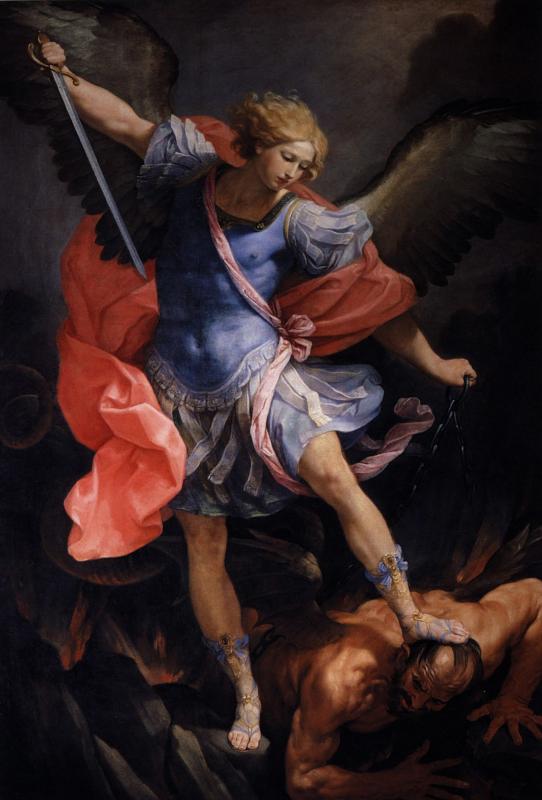
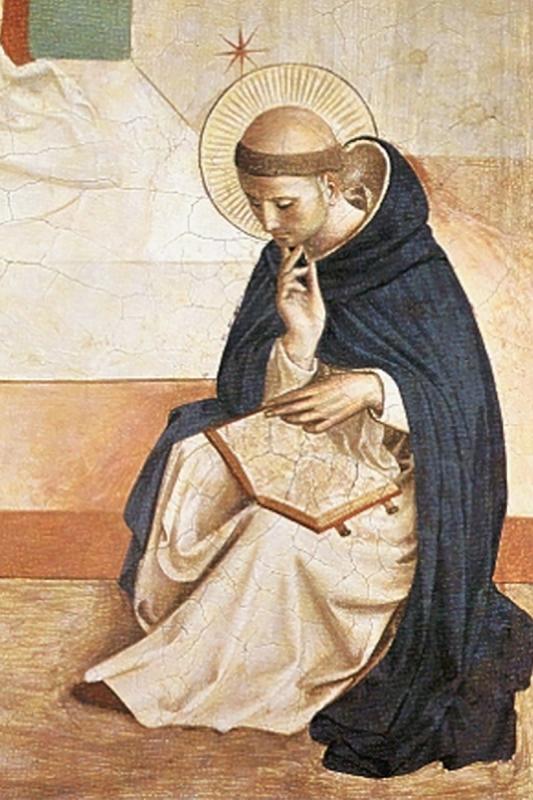
Saint Benedict
Saint Benedict is one of the greatest Saints of the Catholic Church. Benedict, who lived during one of the darkest times in Roman history—the invasion of the Goths—, became a beacon of faith that would have a huge influence on the development of European culture and civilisation.
Most of what we know about St Benedict comes from the “Second Book of Dialogues” of St Gregory the Great.
Saint Benedict and his twin sister Saint Scholastica were born into a noble family in Nursia in 480, right after the collapse of the Western Roman Empire. He was sent to Rome to study and complete his education, but he was dismayed by the lack of discipline and immoral behaviour of his fellow students.
MoreSoon he decided to quit his studies and give up all of his worldly possessions and his inheritance to pursue an ascetic life. So he settled down in the valley of the Aniene river, living in spiritual isolation in a cave in the mountains of Subiaco. When Benedict’s reputation for sanctity spread throughout the region, many men flocked to him to follow his lead and live a common life of prayer and work.
In 530, Benedict founded his famous monastery in Monte Cassino. Here, in 540 he wrote his famous “Rule of Saint Benedict”, which gives spiritual guidance and organisational structure to monastic communities and is still observed today by Benedictine monks and nuns around the world.
The Rule, which was in part a reaction against the extremes practiced by some monks, recognised each individual member’s special abilities and needs. Known for its motto "Ora et Labora" (Pray and Work), it revolved around the following principles: “stabilitas loci” (the vow to spend one’s entire life in the same monastery), conversion of life, compassion, and obedience to the abbot. As a matter of fact, Benedictine monasteries were independent of one another and subject to the authority of the abbot, who led the monastic community as a "loving father" (the word "abbot" comes from abbà, which means “father”). Each monk’s day was organised around manual work (depending on one’s natural inclinations and abilities) and prayer.
In the following centuries, many Benedictine monasteries were built throughout Emilia-Romagna. Saint Benedict and his Rule undoubtedly shaped the spirituality and the many religious traditions of this region.
San Giacomo il Maggiore
Originario secondo i vangeli di Betsaida, località sul lago di Tiberiade, Giacomo – figlio di Zebedeo - è fratello di Giovanni. Viene indicato come “il Maggiore” per distinguerlo dall’apostolo omonimo ossia Giacomo di Alfeo. Forse per il temperamento impulsivo e zelante viene anche chiamato da Gesù, assieme al fratello Giovanni, Boanerghes cioè “figli del tuono”.
È uno dei Dodici e i vangeli ce lo presentano anche come membro della cerchia più ristretta del Messia, quella a cui probabilmente Gesù si affidava di più. È infatti presente assieme a Pietro e Giovanni al momento della trasfigurazione oltre che ad uno dei miracoli più toccanti di Gesù durante l’episodio della resurrezione della figlia di Giairo e nella sofferta notte del Getsemani.
MoreSappiamo che anche la madre – Salome – faceva parte del gruppo di donne benestanti che seguì Gesù e gli apostoli negli anni dell’apostolato, probabilmente sostenendo anche materialmente le necessità del gruppo. La stessa Salome è protagonista del famoso episodio in cui arriverà a chiedere per i suoi due figli – pronti a bere, a loro dire, il calice che Gesù berrà - i posti migliori nel regno che il Messia si sarebbe apprestato ad edificare di lì a poco. La richiesta, come noto, venne con veemenza rispedita al mittente, ma il calice amaro della persecuzione in effetti passò anche per la gola di Giacomo che attorno agli anni ‘40 venne decapitato da Erode Agrippa divenendo il primo Apostolo martire.
Oltre alla tradizione che lo vuole, dopo la morte di Gesù e prima del martirio, in viaggio verso la Spagna per l’evangelizzazione di quella terra, nella Legenda Aurea Jacopo da Varazze narra che, successivamente alla sua morte, i suoi discepoli ne abbiamo trafugato il corpo traslandolo fino alle coste della Galizia. Il sepolcro con le sue spoglie sarebbe rimasto nascosto fino a quando nel 830 fu rinvenuto in seguito alla visione di un fenomeno prodigioso. Nel luogo del rinvenimento (poi soprannominato campus stellae cioè “campo della stella” dalla visione apparsa in cielo) venne poi eretta quella che oggi è conosciuta come Santiago di Campostela, città capoluogo della Galizia, con la sua celeberrima cattedrale dedicata a San Giacomo il Maggiore e punto culminante di uno dei cammini di pellegrinaggio più significativi della storia della cristianità.
Per questa tradizione che lega San Giacomo alla penisola iberica in un momento cruciale per la storia europea - e cioè negli anni della conquista Araba -, il Santo fu anche associato a simbolo della resistenza cristiana fino a diventare icona del combattente invincibile nella lotto contro gli “infedeli” e l’Islam.
Anche per questa fama di zelante patrono difensore della cristianità, il pellegrinaggio al santuario che ne deteneva le spoglie crebbe di importanza e di notorietà, divenendo nel medioevo la metà più importante dopo Roma e la Terra Santa.
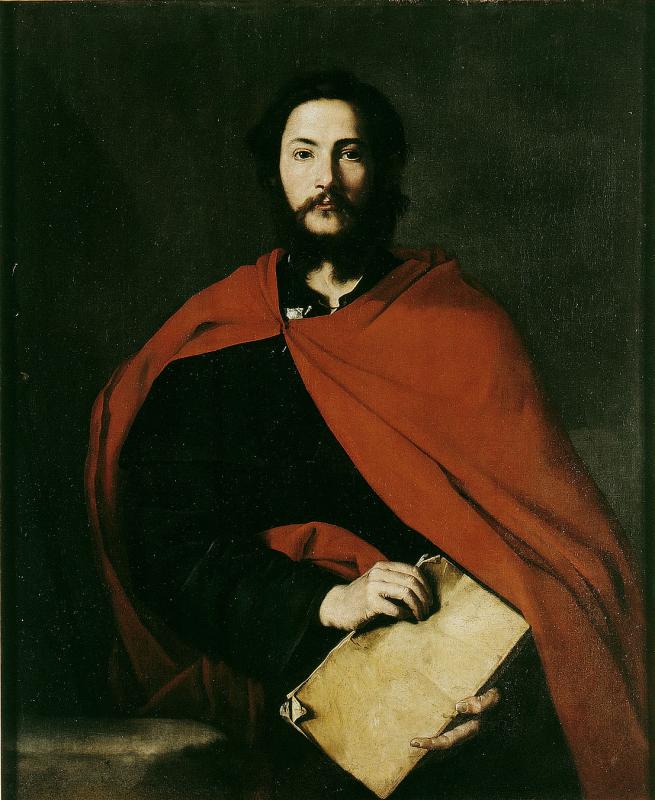
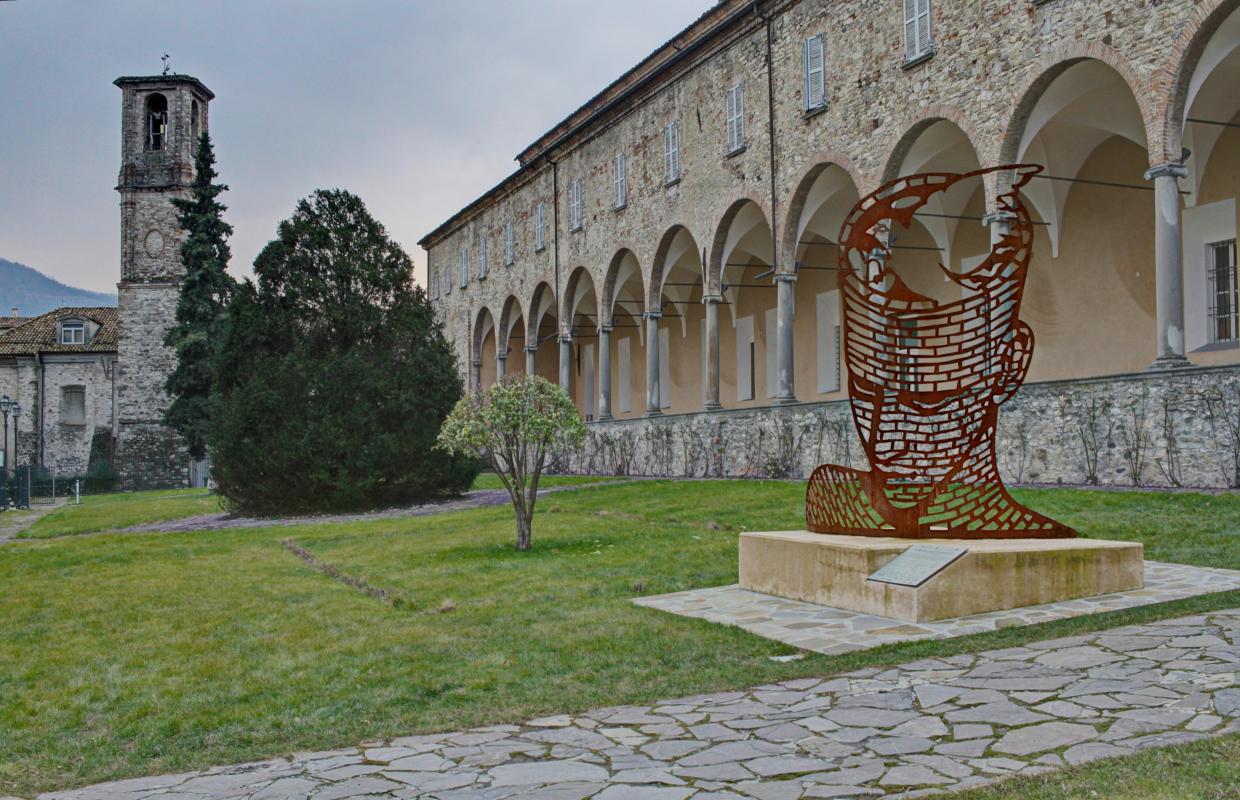
San Colombano
San Colombano, definito da Papa Benedetto XVI “santo europeo” per il suo operato e per la precoce consapevolezza dell’unità culturale europea, è una figura centrale del monachesimo occidentale.
Irlandese, nato a metà del VI secolo, partì dalla terra natìa insieme a dodici monaci per portare la parola di Dio nel continente europeo, giungendo sino a Bobbio, nel Nord Italia, dove morì all’età di 73 anni.
Durante il lungo viaggio, compiuto tra i cinquanta e i settanta anni, si confrontò con i più noti personaggi della sua epoca e assieme ai suoi compagni fondò diversi monasteri in Europa.
Nel 612, San Colombano è in Italia. A Milano, allora capitale del regno longobardo, venne accolto benevolmente dal re Agilulfo, di confessione ariana ma di mentalità tollerante, e dalla moglie Teodolinda, fervente cattolica.
Agilulfo incaricò Colombano di tentare una mediazione diplomatica con il Papa per legittimare il suo regno e in cambio gli concesse di fondare un nuovo centro di vita monastica a Bobbio.
La donazione è testimoniata da un documento datato 24 luglio 613. Colombano, giunto a Bobbio nell’autunno del 614, restaurò l’antica chiesa di San Pietro e vi edificò attorno il primitivo cenobio sull’esempio dei monasteri irlandesi: semplici celle in legno e paglia, una cappella per i fedeli e alcuni locali di servizio.
Dopo un solo anno, Colombano morì, il 23 novembre 615, all’età di circa 73 anni.
La sua tomba si trova tuttora nella cripta dell’abbazia insieme a quelle degli abati suoi successori.
Il 23 novembre si ricorda la morte del Santo patrono di Bobbio e copatrono della Diocesi di Piacenza-Bobbio.
